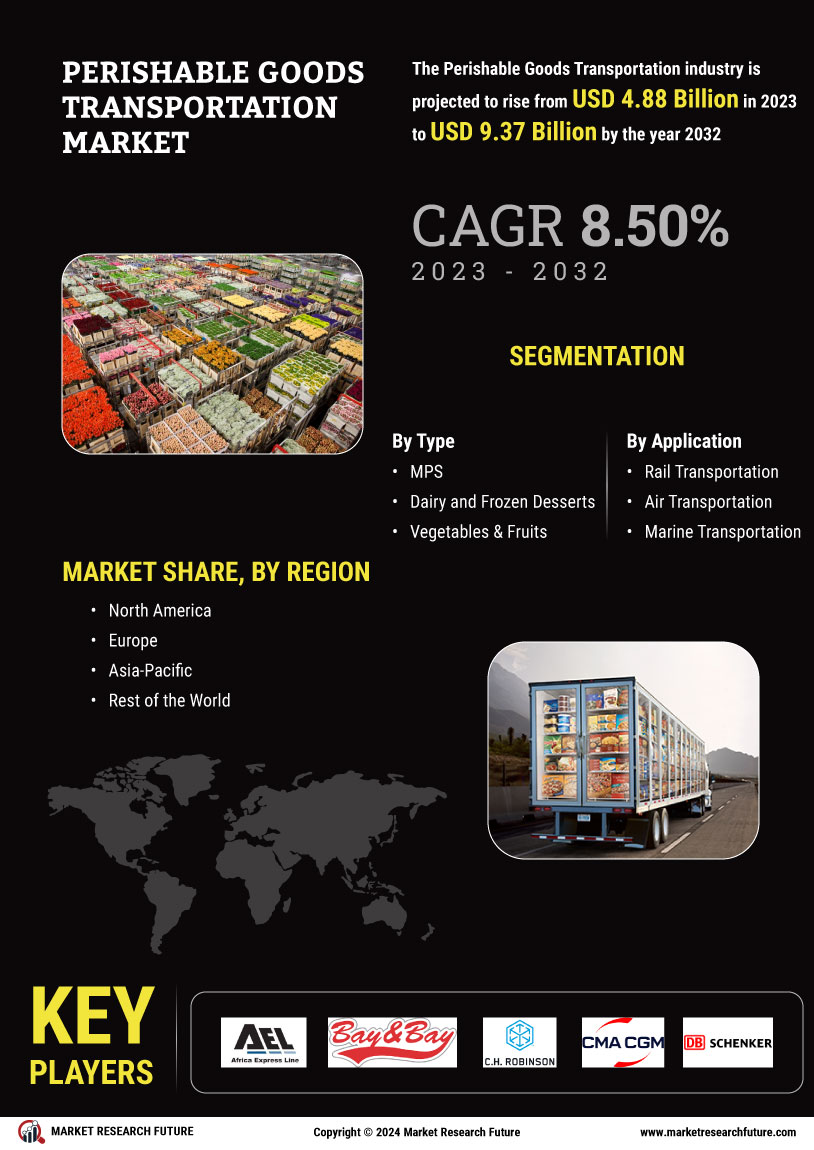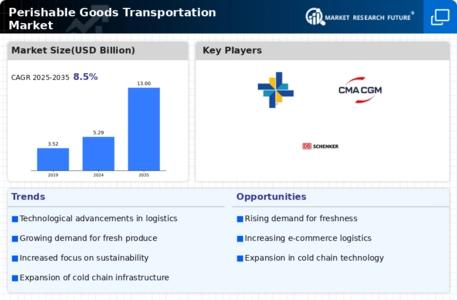Leading market players are investing heavily in the research and development in order to expand their product lines, which will help the Perishable Goods Transportation Market grow even more. Market participants are also undertaking different strategic activities to spread their footprint, with important market developments including contractual agreements, new product launches, mergers and acquisitions, higher investments, and collaboration with the other organizations. To expand and survive in the more competitive and rising market climate, the Perishable Goods Transportation industry must offer cost-effective items.
Manufacturing locally to minimize the operational costs is one of the key business tactics used by the manufacturers in the Perishable Goods Transportation industry to benefit the clients and grow the market sector. In recent years, the Perishable Goods Transportation industry has offered some of the most significant advantages to several industries. Major players in the Perishable Goods Transportation Market, including Africa Express Line Limited, Bay & Bay Transportation, C.H.
Robinson Worldwide Inc, CMA CGM Group (MERIT France SAS), DB Schenker, Deutsche Post AG, FST Logistics Inc, Hapag-Lloyd AG, Hellmann Worldwide Logistics SE, K Line Logistics Ltd (Kawasaki Kisen Kaisha Ltd), and others, are attempting to raise the market requirement by investing in the research and development operations.
C.H. Robinson Worldwide Inc. is a logistics and transportation services company that has established itself as a major player in the supply chain industry. Headquartered in Eden Prairie, Minnesota, the company operates a vast network that spans the globe, providing a wide range of the transportation and logistics solutions. With a history dating back to 1905, C.H. Robinson has evolved into a Fortune 500 company, leveraging its expertise in freight and logistics to connect shippers and carriers across various industries. In September 2023, C.H.
Robinson Worldwide, Inc. and Cold Chain Solutions (GCCA) announced a strategic partnership to expand access to GCCA's temperature-controlled transportation and logistics services for C.H. Robinson's customers.
DHL Forwarding, a division of the logistics giant Deutsche Post DHL Group, stands as a prime player in the freight and logistics industry. With its headquarters in Bonn, Germany, DHL Forwarding specializes in providing air, ocean, and road freight services, offering comprehensive solutions for the efficient and reliable movement of goods across the globe. As one of the world's largest logistics providers, DHL Forwarding leverages an extensive network of offices and agents in over 150 countries, ensuring a seamless and interconnected supply chain.
In August 2023, DHL Forwarding and EverFresh Logistics partnered to offer a joint airfreight solution for perishable goods, combining DHL's network with EverFresh's expertise in temperature-controlled transportation.














Leave a Comment